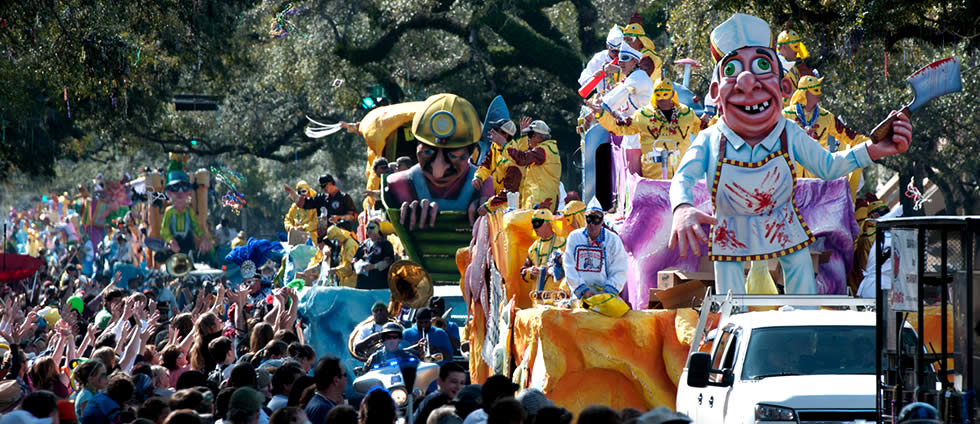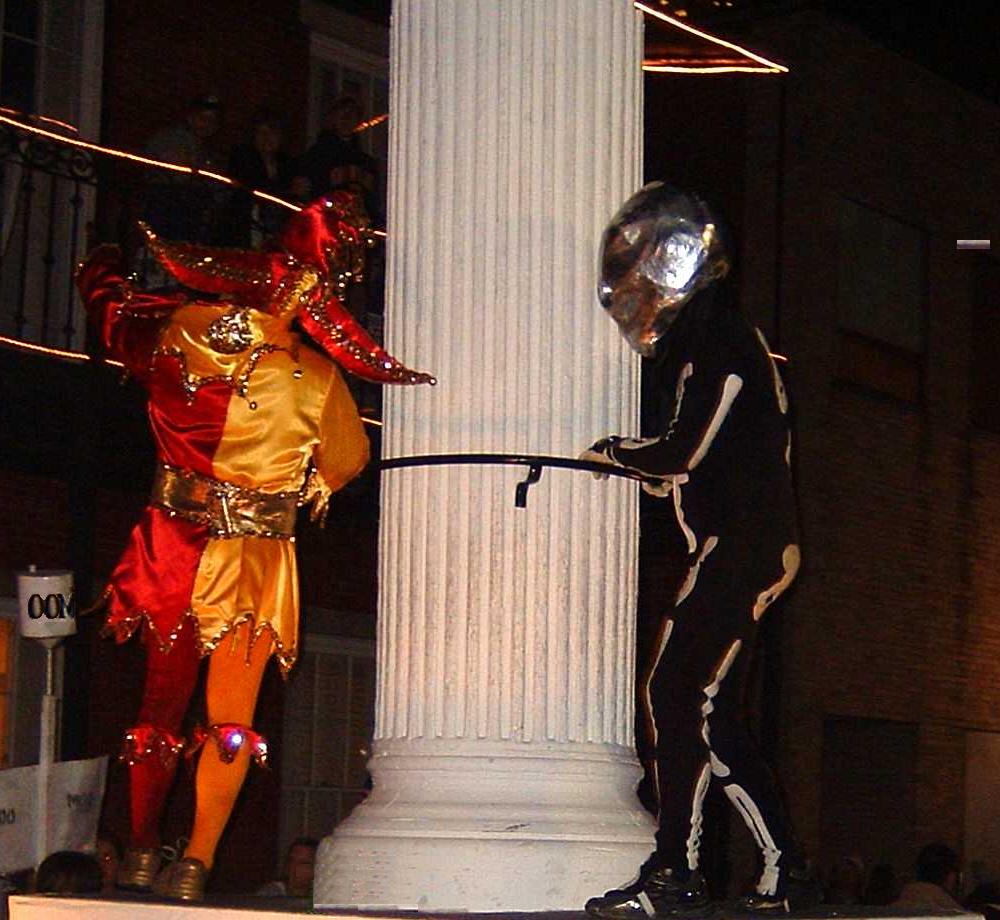Mardi Gras of the World Series- Mobile, AL!!
There is only one Mardi Gras in America older than the New Orleans Mardi Gras, and that is Mobile’s, only 144 miles away. Begun by Nicholas Langlois of France in 1703, fifteen years before New Orleans was founded, although today the Crescent City’s celebration is much more widely known. In Mobile, the first capital of French Louisiana (1702), the festival began as a French Catholic tradition, as do Mardi Gras around the world.
Mardi Gras in Mobile has now evolved into a mainstream multi-week celebration across the spectrum of cultures in Mobile, becoming school holidays for the final Monday and Tuesday (some include Wednesday),regardless of religious affiliation. Much the same has happened in New Orleans. In downtown Mobile, there are 38 parades over 3 weeks. Baldwin County has a dozen major parades, and outside of downtown there are several parades as well.
When examining the Mardi Gras in New Orleans and Mardi Gras in Mobile, I’m struck by one huge similarity; both have fascinating histories. New Orleans has its ribald parades, Krewe du Vieux for example, but Mobile doesn’t.
Mobile has a number of strange, historic, and strong Mardi Gras traditions. One of my favorites is Joe Cain Day. Joe Cain is credited with re-starting the Mobile Mardi Gras after the War Between the States. In 1868, Joe Cain costumed as Slacabamorinico, a make believe Chickasaw Chief. The Chickasaw, a legendary fighting force, had never been defeated in battle throughout their history. Cain had been in New Orleans the year before for the Fireman’s Day Parade. The next day was Mardi Gras Day, and Cain was impressed with what he saw. His costume was an indirect insult to the still occupying Union force, since the Chickasaw had always won in battle.
A half dozen former Confederate veterans joined Cain later in the day, riding in a decorated coal wagon playing musical instruments. They became known as the L. C. Minstrel Band, now known as the Lost Cause Minstrels of Mobile.
No day is greater than Joe Cain Day. Cain is honored on the Sunday before Mardi Gras every year with a graveyard procession featuring Cain’s Merry Widows, who dress in 1800s funeral attire and weep and wail for their beloved husband. Once they’ve finished this ritual, the Widows throw black beads and black roses to the crowd and head over to Cain’s original home in the Oakleigh Historic District, where they are invited in for cocktails and bicker over who was his favorite.
In the afternoon, the Mistresses of Joe Cain lead the Joe Cain Procession, also known as the People’s Parade, featuring homemade floats made by groups of local friends, families, businesses, churches, and schools. Lasting all afternoon, it is the longest parade of Carnival, and it draws in the neighborhood of 150,000 participants and onlookers.
Cain helped to organize the T.D.S. (Tea Drinker’s Society), one of Mobile’s mystic societies, in 1846; however, their banquets were part of Mobile’s New Year’s Eve celebrations, rather than being held on Mardi Gras day. Other groups had developed Mardi Gras parades, but the Civil War had brought them to a halt.
He’s buried in Mobile in the Church Street graveyard. His gravestone says-
Here lies old Joe Cain
The heart and soul of Mardi Gras in Mobile
Joseph Stillwell Cain
Slacabamorinico – Old Slac
From the blog.al.com web site-
In the final Mardi Gras parade, Folly and Death ride the same float. Folly tries to beat death, since Folly is the only one who would try. Mardi Gras is the one time of the year when Folly triumphs over death. Except today, Fat Tuesday.
They ride the first float of the last parade of Carnival, which is presented by Mobile’s oldest and most storied Mardi Gras organization, the Order of Myths. Pulled by mules and illuminated by flambeaux, the float looks like it did generations ago, creating a portal that carries revelers back to the late 19th century. On the float, Folly chases Death around a broken column — what the OOMs refer to as “the broken column of life.”
During that cartoonish chase, round and round, Folly beats on Death with three inflated pig bladders, painted gold and tied to a broomstick, emitting loud whacks that can be heard across the parade route. The symbolism couldn’t be more universal, and the message couldn’t be closer to the heart of Carnival. Only Folly would ever try to beat Death, since Death always wins.
Except today, Fat Tuesday.



Leave a Reply